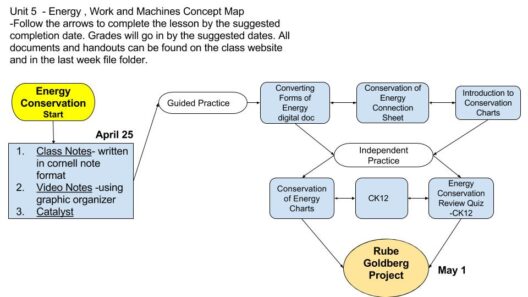The concept of energy conservation manifests in the fundamental principle known as the Law of Conservation of Energy. This law asserts a profound yet deceptively simple truth: energy cannot be created or destroyed; it can only change forms. From its early interpretations in the realm of physics to its broader implications in various fields, this core principle serves as a cornerstone in our understanding of the universe’s operations. Energy’s immutable nature has captivated scientists, environmentalists, and philosophers alike, leading to a myriad of observations that reveal deeper motivations and implications behind energy preservation.
The physicist’s view often encapsulates the essence of this law as it applies to mechanical systems. A pendulum swinging through an arc illustrates this beautifully—at the height of its swing, all kinetic energy is momentarily converted into potential energy. As it descends, this potential energy shifts back into kinetic energy. The perpetual conversion between these two forms is seamless. This observation lays the groundwork for the appreciation of energy conservation in larger contexts, such as ecological systems and technological systems aimed at sustainability.
However, the implications of the Law of Conservation of Energy extend far beyond simple mechanical examples. To grasp its significance, we must delve into the realms of various applications, synonymous with human innovation and ecological stewardship.
The Role of Energy in Natural Processes
In the context of natural systems, energy transitions are vital. Photosynthesis is a paramount illustration, where sunlight energy is harnessed by plants converting it into chemical energy. This energy not only sustains the plants but indirectly fuels all other life forms through food chains. The plant captures solar energy, and through a remarkable biochemical process, transforms it into glucose while releasing oxygen—a critical element for aerobic organisms. Hence, the Law of Conservation of Energy is not merely a scientific law; it is the lifeblood of our biosphere. Understanding these processes enhances our capacity to appreciate energy’s vital role in maintaining ecological balance.
Moreover, the idea of energy conservation prompts us to consider how we utilize these natural processes. The push for renewable energy sources—solar, wind, and hydro—makes energy conservation an imperative aspect of environmental activism. These technologies aim to exploit the perpetual nature of energy transfer without depleting finite resources, thus preserving ecological integrity. As humanity confronts climate change and environmental degradation, observations rooted in the conservation of energy inform strategies that promote sustainability.
Exploring the Technological Transformation
Technological advancements have revolutionized our approach to energy conservation. Energy-efficient appliances, electric vehicles, and smart grids epitomize this evolutionary trajectory. As society moves towards reducing its carbon footprint, a deep understanding of the Law of Conservation of Energy becomes essential. Implementing energy-conserving technologies entails recognizing that while energy may change forms—from electrical energy to mechanical energy, for instance—it ultimately remains constant within a closed system.
This technological transformation ignites a powerful movement toward efficiency and responsible consumption. Energy conservation technologies do not merely reduce waste; they redefine our interactions with energy resources. By optimizing energy use, we mitigate environmental impacts, preserving valuable ecosystems. The connection between human innovation and the conservation principle reveals an underlying unity in our quest for a sustainable future.
Cultural Reflections on Energy Preservation
Beyond the scientific and technological landscapes, the Law of Conservation of Energy finds resonance in cultural philosophies. Many indigenous cultures emphasize a deep relationship with nature, advocating for careful stewardship of the land. This intrinsic understanding of energy conservation resonates within traditional ecological knowledge systems. Many indigenous practices embody the Law of Conservation of Energy; by understanding nature’s cycles and utilizing what is available without excess, they epitomize sustainable living. Such cultural perspectives offer profound lessons for contemporary society. They encourage a holistic worldview that integrates energy conservation into the very fabric of our existence, advocating for a balance that the modern fast-paced lifestyle often overlooks.
The Insatiable Human Curiosity
Why does this law provoke such fascination? The immutable nature of energy sparks questions about existence and the universe’s framework. The thought that energy ebbs and flows, transitioning between states yet remaining perpetually constant, hints at a greater cosmic order. This allure of uncovering the foundational laws governing our environment and existence fosters an insatiable curiosity that propels scientific inquiry.
Moreover, as awareness of climate change and environmental degradation grows, the interest in the Law of Conservation of Energy becomes intertwined with our fight for a more sustainable existence. Every action we take—turning off lights, driving energy-efficient vehicles, or advocating for renewable energy—embodies a conscious decision to honor this fundamental principle. It symbolizes a commitment to preserving what we share: our planet, our resources, and our future.
The need for a nuanced understanding of energy preservation is more pressing than ever. The interplay between energy forms in nature, the innovative technologies aimed at conservation, cultural insights into sustainability, and the fundamental curiosity that binds us to this knowledge all converge at a critical juncture. Ultimately, the Law of Conservation of Energy stands as a reminder of our responsibilities as stewards of the Earth—a call to action for current and future generations. To embrace this law is to engage harmoniously with the dynamics of our world, laying the groundwork for a more sustainable and interconnected existence.







